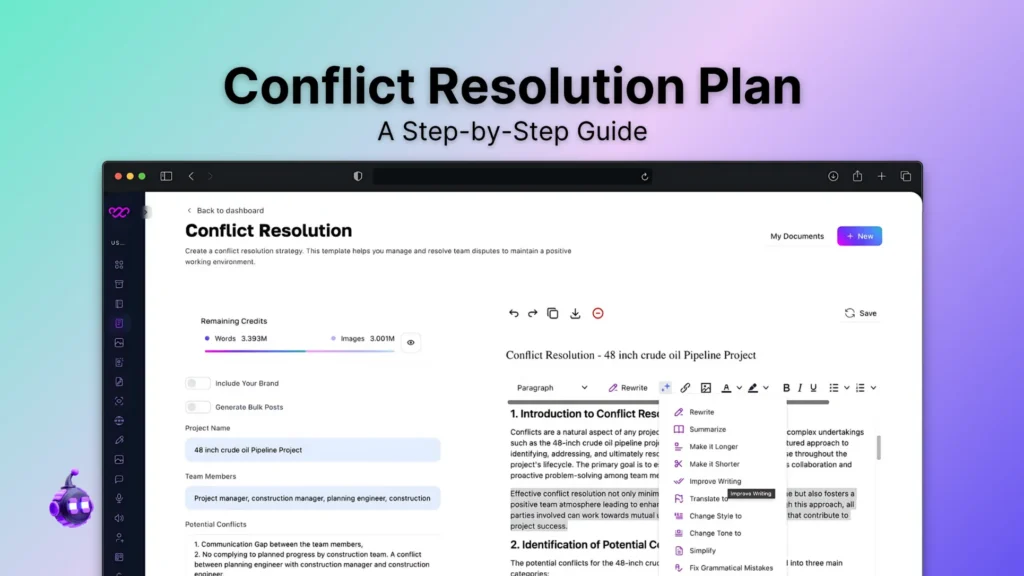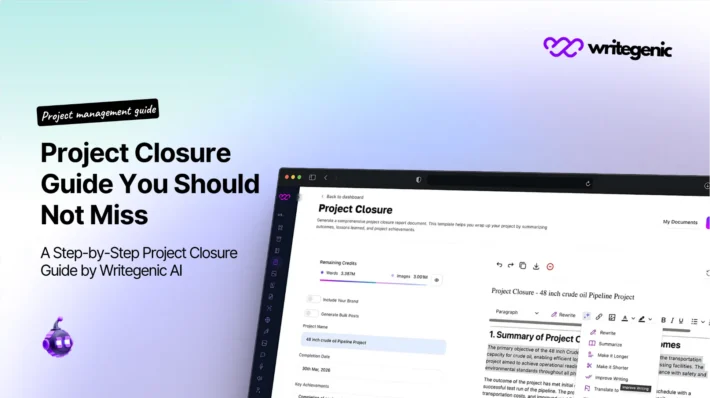Conflict Resolution Plan: A Guide to Fix Conflicts Fast

Conflict resolution plans are quite important, regardless of a workplace, family settings or among friends, thus should be structured well. Although conflict is unavoidable, it does not have to be negative. When approached in the right way, it may culminate in closer relationships, improved communication and positive development. This is where such a tool as conflict resolution comes in handy.
This article will discuss what conflict resolution is, what difference it makes, how it functions, and how you can develop an effective conflict resolution plan to fix conflicts fast before they get out of control.
Table of Contents
What Is Conflict Resolution?
Conflict resolution can be defined as the practices and procedures of bringing about smooth termination of conflict and revenge. It means to find the core of a dispute, bring out the passion and attitude of each player to a conflict and arrive at an acceptable solution to everyone.
Conflicts can arise in various settings:
- Workplace: conflict on responsibilities, communication styles or even on team goals.
- Personal relationships: misunderstanding, unattained expectations, conflicting values.
- Organizational: change management, leadership decision or cross functional teams friction.
Conflict resolution does not aim to prevent conflict but to manage it in a way that can reinforce understanding and trust of people.

Why Conflict Resolution Is Important
Understanding the importance of conflict resolution enables organizations and individuals to engage in disagreements proactively instead of merely reacting. Make no mistake:
Maintains Healthy Relationships
When conflicts are resolved effectively, they safeguard relationships and strengthen trust. It helps prevent grudges and lingering resentment.
Enhances Team Collaboration
Conflict left unattended can undermine teamwork. When handled effectively, it fosters open dialogue and collaboration.
Improves Productivity
Once internal conflicts are resolved, teams devote greater focus to their tasks and achieve superior results.
Promotes a Positive Work Environment
A culture that places resolution above assigning blame encourages respect, lowers turnover, and elevates morale.
Seeking Resolution Benefits Everyone
Seeking resolution benefits both individuals and the organization, lessening stress, conserving time, and promoting sustainability in decision-making.
Conflict Resolution Procedure
An established conflict resolution procedure offers a uniform system of approaching conflict situations in a positive manner. The details can differ in accordance with the context, but the steps below can be a safe guideline:
1. Identify the Conflict
The initial step and the most crucial one is the realization that there is a problem. This refers to admitting that there is a conflict which is to be solved.
2. Understand All Perspectives
Every individual there must get an opportunity to present his/her case. During this stage active listening to understand not to be one with the answer is important.
3. Define the Core Problem
Most of the conflicts are based on misunderstandings or problems. Finding the underlying cause eliminates inappropriate solutions.
4. Explore Potential Solutions
Brainstorm to find potential solutions to problems. Promote thinking and openness to new ideas.
5. Agree on a Resolution
Resolve a solution, which is acceptable by all. Make it feasible and achievable.
6. Implement the Solution
Take practical steps to implement the agreement. Assign duty and frame a schedule.
7. Follow-Up and Evaluate
Monitor the situation to ensure the solution is working. If not, adjustments may be necessary.
This structured approach reduces emotional reactions and increases the chances of finding a fair, long-lasting resolution.
Steps for Conflict Resolution
Now, let’s discuss the steps for conflict resolution in even greater detail:
Step 1: Acknowledge the Issue
Pretending that conflict isn’t there won’t cause it to vanish. Deal with it promptly and with respect.
Step 2: Practice Active Listening
Every party must be given the opportunity to express their viewpoint without being interrupted.
Step 3: Define the Problem Clearly
Pinpoint the core issue, not merely the surface problem.
Step 4: Generate Solutions Collaboratively
Participate in open dialogue to identify viable solutions.
Step 5: Reach a Mutual Agreement
Make sure that both parties feel acknowledged and respected.
Step 6: Take Action and Monitor
Put the solution into practice and establish regular follow-ups to ensure the issue does not resurface.
Benefits of Seeking Resolution Early
Addressing a conflict quickly can prevent major complications in the future. These are the primary advantages of pursuing resolution:
- Prevents escalation into more serious issues.
- Maintains trust between coworkers, friends, or family members.
- Preserves mental health by reducing stress and anxiety.
- Builds a culture of openness and psychological safety.
Creating a Conflict Resolution Plan
A conflict resolution plan states the way in which conflicts should be addressed in a certain organization or within a team. It eliminates guessing, guarantees continuity and encourages equity.
Key Elements of a Conflict Resolution Plan
1. Policy Statement
A short statement which suggests the resolution of the organization with respect towards conflict.
2. Defined Process
Define what employees or members of the team have to do in case of conflict.
3. Roles and Responsibilities
Decide who will take the responsibility of resolving the conflict- this may be the HR, the managers or trained mediators.
4. Documentation Protocol
To hold one responsible, be shielded by the law, and the process enhanced, encourage documentation of significant conflicts and resolve them.
5. Training and Support
Offer some resources or workshops to develop conflict management abilities throughout the team or organization.
A conflict resolution plan should be simple enough to be integrated into employee or team play books.
Examples of Conflict Resolution
Example 1: Workplace Dispute Over Roles
The clash between two workers was in regard to duplication of duties. One of the managers held a discussion, explained the job description and revised the workflow. Performance was increased and both the employees felt that they were being heard.
Example 2: Team Conflict on Project Direction
A project strategy divided a group of developers. Through a group meeting structure, the group shifted to a mutual ground and they settled on a compromise. War became more co-operation.
Conclusion
Conflict resolution is not only the termination of disagreements, but transforming conflict to opportunity. Knowing the conflict resolution procedure, applying effective steps for conflict resolution and investing in organized conflict resolution plans, people and companies can enhance relationships, communication and success in general.
It could be a clash of opinions within the team members, or a conflict on a personal level, in any case, learning to manage it by practicing conflict resolution will be one of the best practices you can ever learn.
FAQs on Conflict Resolution Plan
Why is conflict resolution important in the workplace?
Conflict resolution in the work environment is very important because it promotes healthy relations, it also produces less stress, improves collaboration, and quality decision making. Poor morale, low productivity and high employee turnover are the results that might be achieved due to the unresolved conflict, and effective resolution strategies are important.
How does a conflict resolution plan support team productivity?
Having a clear conflict resolution plan allows teams to solve their disagreements fast without getting too distracted by them, and enhance their communication. It reduces wastage of time, eliminates confusion and creates a culture of mutual respect, hence increasing productivity.
What happens if a conflict resolution plan is not in place?
In the absence of a conflict resolution plan, teams can resolve conflicts unpredictably causing misunderstanding, intensified conflict, or relationship breakdowns. Lack of structure normally leads to unresolved problems, low spirit, and lack of productivity.


